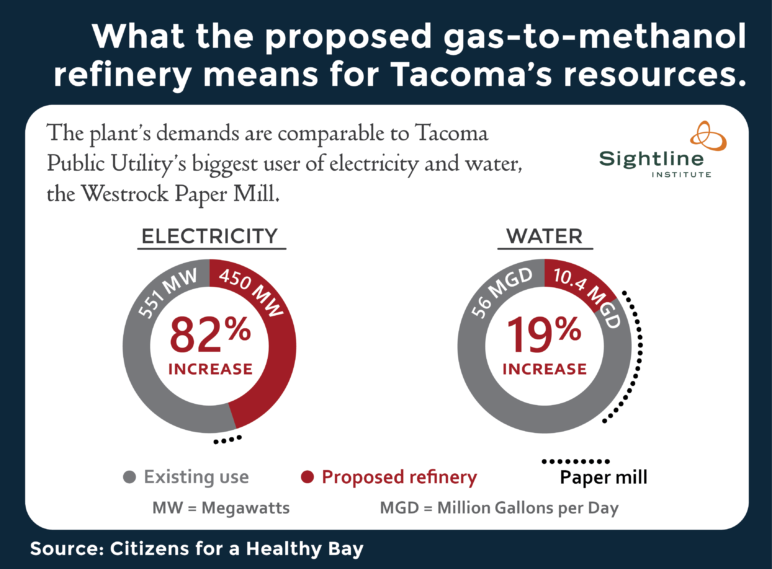Few infrastructure projects in the Northwest have engendered as much controversy as the $3.4 billion methanol production facility proposed for Tacoma. In the coming months, Sightline will explore some of the more complex facets of the proposal, but as a starting point, we have compiled some of the key features of the project.
At a glance, the graphic below captures some essential facts about Tacoma’s methanol refinery:

It would be a big operation by any measure, the largest methanol producer in the world, in fact. Not surprisingly, the refinery would require large quantities of water, natural gas, and electricity to make the petrochemicals that would be shipped to China for use in plastics manufacturing.
As a measuring stick, it’s useful to compare the proposed methanol refinery to Tacoma’s current-day use of electricity and water, as well as to the city’s biggest existing user of resources, the Westrock Paper Mill.

If built and operated at capacity, the methanol refinery would increase Tacoma’s power use by fully 82 percent above current levels. It would also increase water consumption by 19 percent, a potentially troubling figure for a city that issued drought restrictions for its residents during the summer of 2015.
Sightline thanks Citizens for a Healthy Bay, a Tacoma-based NGO that publishes valuable fact-based research about the proposal that helped make these graphics possible. Thanks also to Devin Porter at Goodmeasures.biz, who designed the graphics.
[button link='{“url”:”http://www.sightline.org/2015/08/17/what-methanol-means-for-the-northwest/”,”title”:”Learn more about the proposed methanol plants in the Northwest here.”}’ color=”green”]


Comments are closed.